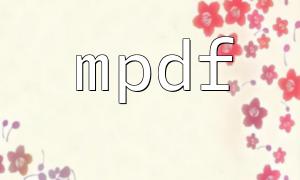ThinkPHP is a high-performance PHP framework based on the MVC architecture, widely used in web application development. Template tags, as a core feature of the ThinkPHP template engine, offer developers an efficient way to control logic within views.
Before using ThinkPHP's tag functionality, ensure the framework's core file is properly imported. Here's how to include the entry file:
// Import ThinkPHP framework entry file
require_once 'ThinkPHP/ThinkPHP.php';ThinkPHP tags are written in a format similar to HTML and are primarily used for structural control or data output in templates. Here are a few common examples:
This tag is typically used to implement custom features. Example usage:
// Use Tag One in a template
<thinkphp:tag1 param1="value1" param2="value2" />Here, param1 and param2 define the tag’s behavior and can be adjusted based on the required functionality.
Similar to Tag One but supports inner content. Usage example:
// Use Tag Two in a template
<thinkphp:tag2 param1="value1" param2="value2">
<!-- Content inside Tag Two -->
</thinkphp:tag2>This structure is suitable for conditional rendering or looping output.
For effective use of ThinkPHP tags in templates, developers should keep the following points in mind:
Tag behavior is controlled via its parameters. Example:
<thinkphp:tag param1="value1" param2="value2">
<!-- Tag content -->
</thinkphp:tag>Set the parameters based on what the tag is intended to do within your logic.
ThinkPHP tags support nesting, which is especially useful in complex templates. Here’s an example of nested tags:
<thinkphp:tag1 param1="value1">
<thinkphp:tag2 param2="value2">
<thinkphp:tag3 param3="value3" />
</thinkphp:tag2>
</thinkphp:tag1>Nesting allows for building structured and layered template logic with clarity.
This article provides a structured introduction to using ThinkPHP tags, including how to import the framework, basic tag usage, parameter configuration, and tag nesting. Mastering these elements can help developers build cleaner, more maintainable templates and enhance overall development efficiency.









